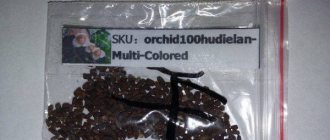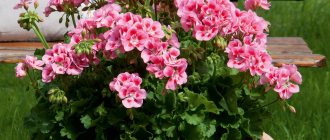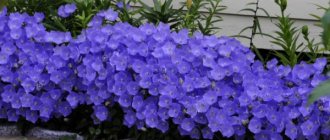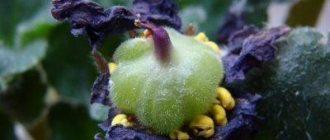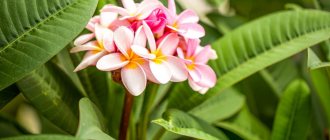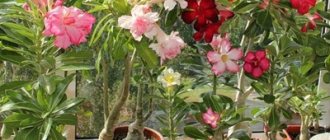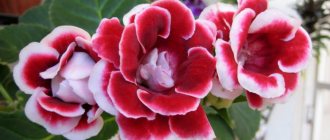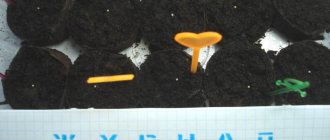Gloxinia is a perennial shrub that was brought from the tropical American climate. People call it sinningia. The leaves and flowers have a velvety texture, which provides excellent decorative qualities. Growing from seeds is quite difficult. However, if you try, everything will work out. It is important to know how to grow gloxinia so that it decorates your garden for a long time.
When to plant gloxinia seeds
The best time to sow indoor flowers is winter. Seedlings will begin to develop in spring, when the length of the day increases. Gloxinia seedlings will receive natural light, and the grower will have fewer problems organizing artificial lighting.
Winter is considered the optimal time for sowing
If desired, sowing can be done in the fall. However, the gardener will have more worries. First, you need to organize the lighting. Winter days are short. The seedlings will be dark. Secondly, there is a problem with air temperature. Its norm will have to be constantly artificially maintained indoors. Failure to comply with the conditions will result in gloxinia seedlings stretching out.
What do gloxinia seeds look like?
Externally, the flower seeds look like very small grains of irregular shape. Color ranges from light to dark brown. They can only be seen well under a magnifying glass.
Gloxinia seeds are very small
The grains are not only small, but also light. If you take a careless breath, they can fly apart through the air. For this reason, gardeners like to grow gloxinia from purchased seeds, since most of them are pelleted and easier to sow.
How to collect gloxinia seeds at home
Collecting seeds yourself is not an easy task. In general terms, the process resembles a whole ritual with preparatory actions.
Gloxinia seeds ripen in capsules
In order for gloxinia to produce full-fledged seeds, you need to perform a number of actions. The flower does not pollinate on its own. You need to take a cotton swab, a soft brush or just a piece of cotton wool and move it over the pistil of each flower during flowering.
Advice! If several gloxinias grow and bloom at the same time in the house, then for better pollination you need to go over all the pistils of the flowers with a cotton swab.
Having completed the gloxinia pollination procedure, the gardener can only wait for the result. After flowering, a box with seeds forms in place of each flower. You need to wait about another week until they ripen. The completion of the process is determined by the bursting of the boxes. They are carefully cut with scissors. Holding the tail with your fingers, place the box into a glass and gently tap it. All mature seeds will fall off easily.
Advice! Self-collected seeds can be planted without prior preparation.
Preparing for sowing gloxinia seeds
Gloxinia seeds germinate poorly. When collecting on your own, it’s not a fact that you didn’t come across a lot of pacifiers. For this reason, gloxinia seeds should be planted densely. If you are lucky and they sprout en masse, it is better to thin out the crops by removing weak shoots. When you decide to use purchased seed material, you need to choose it correctly in the store.
Seed selection and preparation
All gloxinia seeds sold come prepared for sowing. Additionally, you don't need to do anything with them. It is important to choose the right company. The best seed material is considered to be from Holland and Germany. Seeds from the UK are famous for their germination. The quality of domestic seeds is slightly lower, but you can also find good options.
Read more Tuberous gloxinia: planting, how to grow gloxinia from a tuber
Imported seeds are considered the best
When giving preference to hybrids, it is important to know that seeds come in first and second reproduction. On the packaging they are designated F1 and F2, respectively. The healthiest gloxinia seedlings are obtained from such material. However, it is important to know that in the future you should not try to collect seeds from them yourself. They may not sprout, or a flower may grow with completely different characteristics from its parents.
Coated seeds are considered convenient for sowing
Gloxinia seed material is sold in the form of pickled grains or small pellets. The second option is a special treatment. Each seed is covered with a complex of nutrients, which is dried into a dense shell. To get seedlings, pelleted seeds need to be watered regularly. Water causes the shell to become limp, and Gloxinia grains fed with nutrients produce a strong sprout.
Important! Gloxinia seed material can be stored for up to 5 years.
Soil requirements
To grow gloxinia, it is easier to purchase ready-made soil in a specialized store. When preparing yourself, it is optimal to take equal amounts of soil under the birch and pine trees. The soil is mixed and the same portion of sand is added. The finished soil mixture is calcined in the oven for 40 minutes.
It is more convenient to obtain gloxinia from seeds in peat tablets, which at the same time act as a good fertilizer. First, they are soaked in water and the protective film is removed. From 2 to 3 seeds are sown in each tablet.
Choosing a pot
You can sow in any container, but you need to think about convenience. To obtain seedlings immediately after sowing the grains, the container must be covered. In other words, create a greenhouse. For this reason, it is more convenient to use transparent plastic packaging with lids.
Confectionery packaging is suitable for seedlings
A container for planting can be purchased at any supermarket with a confectionery product. The packaging chosen is one with a lid that closes tightly and is secured with locks.
Other planting methods
Flowers can also be grown and propagated vegetatively.
Leaf
On the leaf plate selected for propagation, cuts are made along the veins. The sheet is pressed into moist soil. Until the sprouts appear, the seedling is kept under a transparent cap.
tuber
In order to propagate a flower with a tuber, you first need to wake it up. If the plant does not come out of hibernation on its own in May, it needs help. The simplest method is to spill the soil in the pot without touching the tuber and wrap it in a plastic bag. After this, the pot is placed in a well-lit, warm place for about 2 weeks. After new sprouts appear, the newly formed shoot with sprout is separated from the old tuber with a sharp knife. All sections are treated with crushed coal. The shoot is planted in the ground.
Cuttings
Young leaves with a long petiole are chosen as planting material. They germinate either in water or directly in the soil. Cover with a cap during germination.
Growing gloxinia from seeds at home step by step
The process of obtaining seedlings is simple when all the necessary materials are prepared. To grow gloxinia from seeds, follow a number of simple steps:
- First of all, prepare the seeds, containers, soil, and material for drainage. You will need a spray bottle with warm water for irrigation.
- The container inside is disinfected with manganese. A drainage layer 1 cm thick is poured onto the bottom. Fine gravel is suitable for this purpose, or you can simply collect pebbles.
- Soil is poured over the drainage in a 3 cm layer. It is lightly compacted with the palm of your hand. If you made the soil mixture yourself, it wouldn’t hurt to add a little peat to it for better root development.
- The filled soil is sprayed with a spray bottle. It should be slightly moistened without any dirt forming.
- Granulated seeds are spread by hand on the surface of the soil. Regular seed material is very small. For sowing, it is optimal to make a device from a sheet of paper folded in half. Grains from the pack are poured onto the fold. By hitting your finger with a paper device, the seeds gradually fall onto the ground. You just need to have time to drive across the entire landing area.
- The crops are lightly crushed with soil. Moisten the soil again with a spray bottle.
- The container with the crops is covered with a transparent lid. The box is kept warm. It is impossible to ventilate gloxinia crops before germination. Irrigate the soil with a spray bottle every 3 days. Around the beginning of the germination period, lighting is organized. It is optimal to use a phytolamp for it.
- With the appearance of the first shoots, the seedlings are given proper care. This requires timely ventilation, watering and other procedures.
The process of growing gloxinia is shown in more detail in the video:
Read more Reproduction of gloxinia by leaf at home step by step with photos and videos
Step-by-step instruction
For planting you need to prepare:
- a shallow and wide container for seedlings with drainage holes;
- translucent sealed cover or film;
- soil from one part of coniferous soil and deciduous soil containing peat, which will provide the root system with the necessary elements;
- regular or granular seeds;
- expanded clay gravel for drainage;
- spray;
- paper;
- a needle.
Algorithm of actions:
Fill the bottom of the container with drainage so that a layer 1 cm high is formed. Level it.
Spread the soil on top of the expanded clay gravel in a 3 cm layer and compact it lightly. It can first be disinfected in the oven at a temperature of 150 degrees and allowed to cool.
Spray the soil generously with water from a spray bottle.
Fold a sheet of paper in the middle and sprinkle seeds on the fold.
Distribute them over the top layer of soil, dropping one seed at a time with a needle.
Slightly deepen the seeds by spraying them with a spray bottle at a distance of at least 40 cm.
Cover the container with a lid or transparent film with small ventilation holes.
Caring for gloxinia seedlings from seeds
With the appearance of the first shoots, the gardener needs to provide them with proper care. What is important here is an optimal microclimate, proper watering, lighting, fertilizing and maintaining temperature conditions. If you are not lazy, gloxinia seedlings from seeds will grow strong.
Lighting
During the day, the seedlings have enough natural light. The container is placed on the windowsill, but make sure that there is no direct sunlight. In winter, the day length is short. The lack of lighting is compensated by artificial lighting. Gloxinia needs light for 12-14 hours per day. The lamp is placed at a distance of 40 cm from the tops of the plants. However, the distance may vary depending on the power of the lighting fixture.
Temperature
You can sow gloxinia seeds at any temperature, but you need to keep the crops warm until germination. The optimal indicator is from 22 to 26 °C. With seed germination, the temperature is reduced to 20 °C. The extreme minimum threshold is 18 °C.
Air humidity
Inside the room with seedlings, normal air humidity is maintained. Ventilation is carried out periodically, but without drafts. Do this up to 2 times a day for about 10 minutes.
Watering rules
Growing Gloxinia loves moisture. Watering is carried out frequently, but in small doses. The soil should not dry out. Based on its condition, it is easy to determine the need for watering. If the soil surface begins to dry out slightly, irrigation is required. Use filtered water, 2 °C warmer than room temperature. Compliance with this condition is important to avoid root rotting. During irrigation, try to wet only the soil. It is undesirable for water to get on the foliage.
It is optimal to water gloxinia in a tray
Excess water after watering should drain into the pan. They should be thrown out. You can organize the watering process itself through the tray. When the soil has absorbed the required amount of moisture, the remaining water is poured out in the same way.
More details Gloxinia: types and varieties, photos of flowers with names
Top dressing
Numerous buds on an adult gloxinia will signal that the seedlings have been properly cared for. Up to 20 of them are formed on one plant.
Complex preparations are used for feeding
When gloxinia is propagated by seeds at home, the flower is fed three times a month with complex fertilizers throughout the growing season. In stores they buy special ready-made compositions for flowers. From August 15, a period of calm begins. At this time, nitrogen is completely excluded from fertilizing. Fertilizers containing potassium and phosphorus are suitable.
Picking gloxinia from seeds
Picking is necessary if sowing was carried out not using peat tablets, but in a common container. The process helps to avoid crowding of seedlings.
It is convenient to pick plants with a plastic or regular metal spoon
Usually 3-4 picks are carried out for gloxinia. The first time is transplanted a month after germination. The plant should have two full leaves at this point. The extracted seedlings are transplanted into another container with soil of a similar composition. Maintain a distance of 2 cm between plants.
Advice! The first picking is needed if the seedlings are dense. For normal crops, the procedure is not necessary.
The second picking is performed 2 months after seed germination. It cannot be ignored. At this moment, the plants grow four full leaves. Plants are transplanted into soil of a similar composition, maintaining a distance of about 5 cm.
The third pick may be the last if the plants are planted immediately in separate pots. The flower must have 6 full leaves. If the plants are replanted in groups in a container, then maintain a distance of 10 cm. In this case, after growing, 4 picks will be required over the already permanent pots.
Breeding methods
The crop can be propagated either by vegetative or seed methods.
The vegetative method is used if there is an adult bush.
Propagation is carried out by leaf blades, roots or cuttings.
Leaf propagation procedure:
- Select the most compact sheet plate. You can also split a large leaf with a knife. The separation is carried out along the plates. The petiole should be shortened to 2 cm.
- Place the parts in different containers. They need to be filled with light, moist soil.
- The containers are immersed in plastic bags to create a greenhouse effect.
- After a month, when rooting occurs, the protection should be gradually removed. Thanks to this, the plant will better adapt to the environment.
Reproduction by dividing tubers is carried out according to a similar principle. The seed method will be discussed in more detail below.
When does gloxinia bloom from seeds?
Under good growing conditions, gloxinia produces up to 20 buds. However, to wait for flowering, at least 7 months must pass from the moment of sowing the seeds.
Flowering begins in the seventh month
From September-October, the flower begins a period of calm. At this time it does not bloom. So that before this time the indoor crop has time to grow from seeds, form and bloom, it is reasonable to start sowing no later than February.
Features of culture
The ornamental shrub is characterized by the following features:
when flowering ends, the above-ground part begins to die off;
before winter requires fertilizing that does not include nitrogen;
adult bushes are planted in large containers;
needs additional lighting, which has a positive effect on the flowering of the crop.
